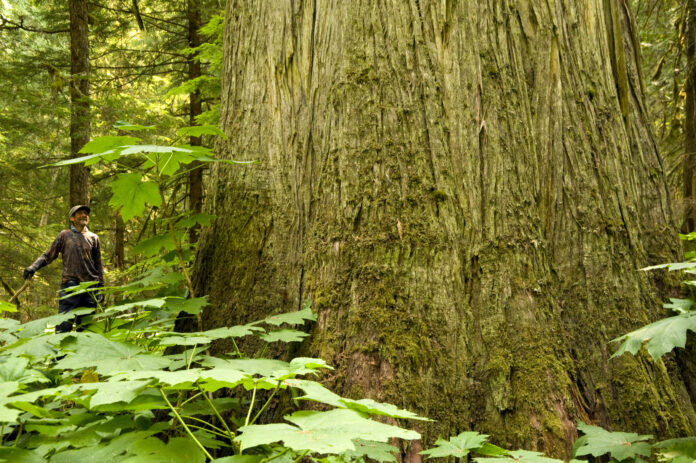The Ministry of Forests insists a stand of old-growth timber in the Duncan River valley is not threatened, despite concerns raised by the Valhalla Wilderness Society.
The local environmental organization says BC Timber Sales is “pushing a road and clearcut almost to the edge” of the stand.
They say logging this year will come within 50 metres of ancient trees in several spots and will result an increase in winds that will have a drying effect, causing the loss of interior species that have thrived on the humidity caused by the damp ground and shade.
“Leaving small stands of old-growth standing in a patchwork of clearcuts and roads just creates more ‘islands of extinction,’” says society director Craig Pettitt.
“At one time our government had the understanding and the will to protect large, intact areas. The need to protect our last remaining intact forest has never been more urgent, given the two crises of climate change and loss of biodiversity.”
Pettitt says the forest includes the second largest tree in the BC interior, as listed on UBC’s big tree registry, as well as two other trees that are among the top 12 big cedars. He says cedars within the forest can be up to 1,800 years old.
“BC Timber Sales, in its greed to monetize every standing tree on the west side of Duncan Lake in order to pay for the hugely expensive road that they built at the BC taxpayers’ expense, are willing to risk damaging this irreplaceable ancient forest for profit,” Pettitt says.
No one from the Ministry of Forests was willing to speak to us, but in a prepared statement, they said that in developing plans for the west side of the Duncan, they recognized the value of the old growth and wetland area and established a management zone, which is “maximized” to the extent of the BC Timber Sales operating boundaries.
BC Timber Sales tried to make the protections “as robust as possible” by assessing “numerous” large trees for legal protection, according to the statement, adding that included the largest tree that Valhalla Wilderness specifically cited. They said at least 200 meters of buffer will exist between the planned harvest area and that tree.
The harvest area itself does not contain any old growth, the ministry said, and is on a bench separated from the old growth management area by a “significant cliff band.”
Valhalla Wilderness Society is calling for the creation of a Selkirk Mountain Caribou Park that would link areas of old growth, but the province says it is not considering such an idea.





